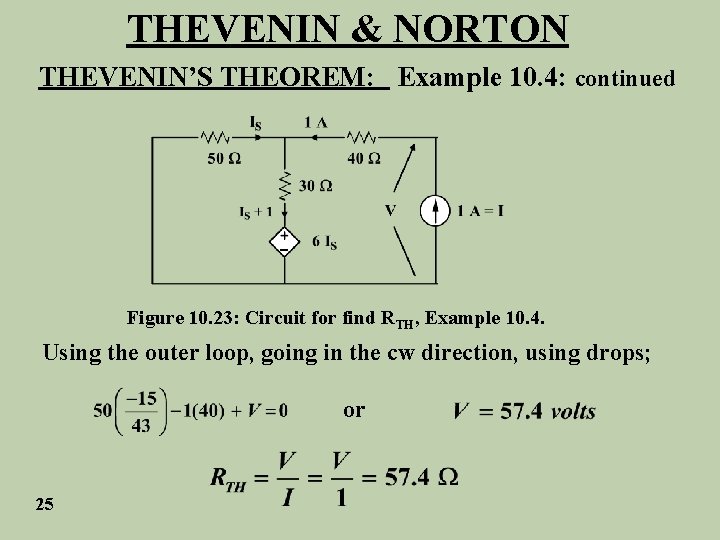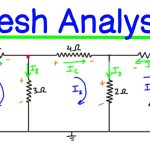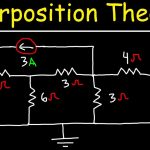Source Transformation
Any linear time invariant network of impedances can be reduced to one equivalent impedance. In particular, any network of sources and resistors can be reduced to one ideal source and one resistor, in either the Thevenin or Norton configurations. In this way, a complicated network attached to a load resistor can be reduced to a single voltage divider (Thevenin) or current divider (Norton).

Thevenin and Norton equivalents let you replace a Voltage source in series with a resistor by a current source in parallel with a resistor, or vice versa. This is called a source transformation.
The point to be noted is that the block that is replaced with such an equivalent should be linear and time invariant, i.e. a linear change in the electrical source in that block produces a linear change in the equivalent source, and the behaviour can be replicated if the initial conditions are replicated. The above shown transformation figures are true only if the circuit contains at least one independent voltage or current source. If the circuit comprises only dependent sources then Thevenin equivalent consists of
![]() alone .
alone .
Thevenin Equivalents
The Thevenin equivalent circuit of a (two-terminal) network consists of a voltage source in series with a resistor. The Thevenin equivalent will have the same output voltage and current regardless of what is attached to the terminals.
Techniques For Finding Thevenin Equivalents
· Network contains no sources (only resistors): The Thevenin resistance is equal to the equivalent resistance of the network. The Thevenin voltage is zero.
· Basic: Works for any network except one with no independent sources. Find the voltage across the terminals (with positive reference at terminal A) when they are open-circuited. Find the current from terminal A to terminal B when they are short-circuited. Then

The Thevenin voltage source value is equivalent to the open-circuit voltage.
If the network has no dependent sources, the independent sources can be zeroed, and the Thevenin resistance is equal to the equivalent resistance of the network with zeroed sources. Then, find

· Only Dependent Sources:
If the network has only dependent sources, either attach a test voltage source to the terminal points and measure the current that passes from the positive terminal, or attach a test current source to the terminal points and measure the voltage difference across the terminals. In both cases you will have values for Voc and Isc, allowing you to use the Rth = Voc Isc relation to find the Thevenin resistance.
Norton Equivalents
Norton equivalents can be found by performing a source transformation on the Thevenin equivalent. The Norton Equivalent of a Thevenin Equivalent consists of a current source, IN = Vth / Rth in parallel with Rth.
Thevenin and Norton Equivalent

Figure 1 Circuit for the determination of Equivalents
The steps for creating the Equivalent are:
1. Remove the load circuit.
2. Calculate the voltage, V, at the output from the original sources.
3. Now replace voltage sources with shorts and current sources with open circuits.
4. Replace the load circuit with an imaginary ohm meter and measure the total resistance, R, looking back into the circuit, with the sources removed.
5. The equivalent circuit is a voltage source with voltage V in series with a resistance R in series with the load.
The Thevenin Equivalent is determined with R2 as the load as shown in Figure 1. The first step is to open circuit R2. Then the voltage v is calculated with R2 open circuited must be calculated. The voltage across R2 is V1 this is because no current flows in the circuit so the voltage across R2 must be V1 by KVL.
Since this circuit does not contain any dependent sources, all that needs to be done is for all the Independent Voltage sources to be shorted and for all Independent Current Sources to be open circuited. This results in the circuit shown in Figure 2.

Figure 2: Circuit for the Equivalent Resistance
Now the Thevenin Resistance is calculated looking into the two nodes. The Thevenin resistance is clearly R1 + R3||R4. The Thevenin Equivalent is shown in Figure 3 and Rth and Vth have the values shown below.


Figure 3: Equivalent Thevenin Circuit
The Norton Equivalent is created by doing a source transformation using IN = Vth / Rth .(2)

Figure 4: Equivalent Norton Circuit

As a final note if the voltage across R2 is calculate by Voltage Divider Rule using the Thevenin Equivalent circuit in Figure 3.

If the value of Rth form equation 1 is substituted into equation 3.

Now look at Figure 1 and calculate VR2 by voltage divider rule it has the same value as equation 4. If the current through R2 is calculated in Figure 4 by current divider rule



